The task of choosing a tent for a trip into the backcountry can be a daunting one. There is a seemingly endless progression of options. Do you want a 2 person tent even though you’re only one person? Do you want a 3 season tent or four? Do you need a footprint? What series aluminum should your tent poles be made from? What about a bivy, should you be looking at those?
The topic is an expansive one, and wrapping your head around it is a worthwhile undertaking. That said, for most folks, especially those headed off on your average backcountry fly fishing excursion, much of the mystery surrounding tents doesn’t need to be unraveled.
The reason for this is that unless you already know you need a highly specialized or highly featured tent, you don’t. What you should focus on instead, is quality and comfort. Don’t get overly worried about whether your tent poles are 7000 series or 9000 series aluminum, because it likely won’t matter. Find a tent that is the right size, is made by a well-known, reputable manufacturer and that fits your weight requirements.
How Big?
Though there are larger options, most of you are likely deciding between a one or two person tent. There’s no right answer on which you should get (unless you are two, when clearly you need a two person tent), rather you’ll be pitting space vs. weight. Generally, the larger the tent, the heavier it is. As we noted in our article on backcountry packs, weight is your enemy, and adding more of it should never be done without consideration.
A 1 person tent may be half the weight of a two person tent. In order to save the weight, you’re likely throwing out half your available space. If you don’t mind cramped quarters, smaller is always better because it means less weight on the trail. By that same note, if you like a bit more room to setup shop and/or move around while changing and doing other things in your tent, you may not mind carrying a couple extra pounds for a bit of extra roominess.
How much you’re willing to spend is also an important factor here. A $400-$500 two person tent will likely weigh no more than a one person tent that costs half as much (or less).
How Many Seasons?
If you require a 4 season tent, you likely already know this. Most of us aren’t venturing into the Canadian Rockies in February for a backcountry fishing trip. If you are, we’d be coming to you for feedback on backcountry gear instead of the other way around.
Most people will be well served by a 3 season tent that is designed to provide adequate ventilation, reliable protection from rain and wind, and the ability to provide a reservoir of warmth during chilly mornings and evenings.
Single Walled or Double Walled?
Most tents are double walled, comprised of a main tent body that features a breathable mesh and waterproof flooring, with a second layer (called a fly) providing rain and wind protection. These tents offer greater versatility in terms of the weather conditions in which they perform well, but come at the cost of added weight and increased complexity of setup.
Single walled, despite offering less weight and increased weather protection, are specialized and usually reserved for mountaineering or cold weather environments. Backpackers looking to utilize a tent during seasons when moderate or mild conditions exist will likely find single walled tents uncomfortable and lacking breathability, despite technological advances in materials such as Gore-Tex.
What Else?
Be sure to experiment with a tent before taking it into the backcountry. Unpack, set up and break down the tent and make sure you find it convenient and simple to work with. Spend time inside the tent and make sure the available room matches your preferences. Don’t underestimate the importance of being able to quickly set up your tent to seek refuge from approaching weather or the importance of a good night’s sleep in a tent that doesn’t make you feel claustrophobic or otherwise uncomfortable.
Recommendations and Reviews
We tested tents from Marmot, First Ascent, REI and others while in the backcountry fly fishing this past year. Below are a few of the notable offerings.
First Ascent Stargazer 2
If you’re not into mountaineering, it’s possible Eddie Bauer and First Ascent may escape your gaze when looking for backcountry gear. If they have been, they shouldn’t be. We were impressed by Eddie Bauer’s Alchemist pack in our backpack tests and we were even more impressed by their Stargazer 2 tent.

The Stargazer 2 person tent is a two person tent that truly feels like there’s room for two people. In fact, if you’re camping with kids, this tent is a true 2+ (note the plus) person tent. Importantly, Eddie Bauer managed to increase the usable space inside the Stargazer without adding weight. At 4 pounds 5 ounces (trail weight), the Stargazer 2 weighed in similarly to other 2 person tents offering far less living area. At $289, Eddie Bauer is offering the Stargazer 2 at a price point that won’t break the bank the way $500+ ultralights will. To be fair, the Stargazer isn’t clocking in at 2 pounds like some of those models do, but at under 4 and half pounds, First Ascent has put together an all-around attractive offering.
The color-coded, single pole system and fly system are both entirely intuitive and result in frustration-free, quick setup. We also found the stakes that come with the Stargazer of considerably higher quality than other models in the same price range.
Double vestibules, indoor gear pockets, glow in the dark zippers and plenty of places to hang lanterns and other odds and ends were all welcome features. While we didn’t encounter any heavy weather while testing the Stargazer 2, its interior provided a welcome refuge from several chilly Yellowstone mornings where the temperature dipped well into the thirties. If you are interested in the Stargazer’s weather hardiness, Backpacker magazine touts its ability to keep its occupants dry, saying that the Stargazer 2’s “designers set out to create a highly livable shelter for backpackers who spend tons of time in wet weather—and the result nails it.”
REI Passage 1 Tent
The Passage 1 tent from REI provides 3-season shelter for one backpacker. Two color-coded aluminum poles make the tent incredibly simple and fast to set up. The matching footprint is not included, but for a few extra bucks ($16.50) this will help protect the waterproofing on the tent floor. Coming in at around 4.5 lbs packed in its compression sack with a footprint, the Passage 1 is a great value at its very attractive $199 price point. Shedding an extra pound could cost 2-3 times as much.
Besides the quick setup, the Passage 1 held its own against the rain with no leakage or problems to report. One drawback is the tent only comes with five stakes. Although the Passage 1 can be set up freestanding, to properly anchor everything for wind and rain requires that you supply three additional stakes. Don’t expect to bring a backpack inside, as the only space for gear consists of two mesh pockets. Almost the entire 20 square feet is covered by the sleeping bag. Outside, there’s room in the rainfly vestibule for a smaller pack and a pair of boots. When it comes to setup time, pricing, and build quality the REI Passage 1 exceeds expectations.
The Passage 1 is a great value tent. At a very similar 4.5 pounds, though it’s significantly smaller than the Stargazer 2, you’re shedding almost a hundred bucks and adding a footprint.
High End Options
If budget isn’t a big obstacle and you’re looking to maximize room while minimizing weight, considering looking at the Big Agnes Fly Creek UL2 ($389), which offers 2-person sizing at an ultralight 2.2 pounds, or the Easton Kilo 3P ($499) which amazingly offers 3-person roominess at a scant 3 pounds.
Though we don’t have field-testing results for either of these tents, they’re both award winners. We’ll be out in the backcountry this year with one or both of these models and will update our recommendations with detailed results once we return.
Conclusion
When choosing a tent for your backcountry fishing adventure, keep things simple and focus primarily on comfort (space) and weight. Don’t get overly concerned about bells and whistles and specifications that will likely have little impact on your field experience. In other words, pay attention to features that you understand, not those you don’t.





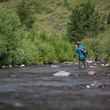
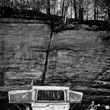




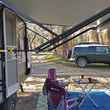



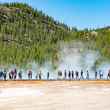
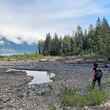



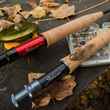
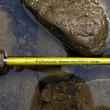




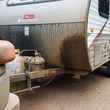

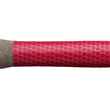

Comments